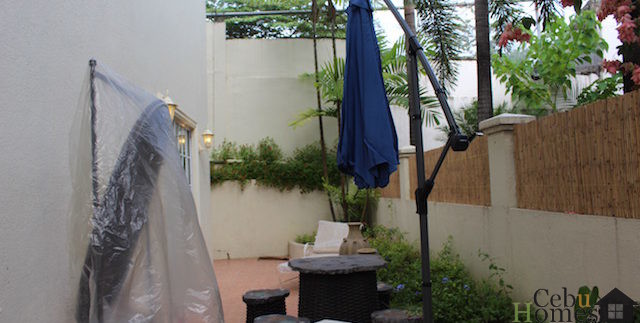
It’s time of the year when we often hear loud droplets from the sky banging our roofs with no definite sign when it would stop. Cebu, being part of the Philippines, a tropical country, is susceptible to different types of rain– from the easy drizzle to the loud storm. In fact, according to Time.com, Philippines is the most storm-exposed country on Earth as of 2013. So regardless of how much it has or hasn’t rained recently, we know more water is headed our way especially around the second of the year.
As for those renting and buying a home, it is very important to do preparations prior to the rainy season. But it doesn’t mean you’re late from doing the check-up especially in this season when heavy rain is probably coming almost every week of the month.
Our favorite online magazine, Hoppler, has shared some tips on how make homes better prepared during monsoon season in Cebu.
Here are some you can take home with:
- Clean your home’s surrounding
Make sure to keep your yard clear from possible trash , scraps, and debris that may clog your drainage.
- Inspect your roof
The roof is quite possibly the most weather-beaten part in our home. Check the roof twice a year to avert costly problems.
Check along the ridges of the roof (the points where the shingles are folded over) because any cracks you see can easily turn into leaks if not caught in time.
Inspect the valleys of the roof (the area of your roof with a downward slope) and make sure there are no holes or rust spots.
Look for missing, curled or loose shingles. Replace these as quickly as possible. Moisture leaking in from these areas can weaken walls, sheathing, and ceilings.
Check out the gutters. Little granules means the roof is losing its coating and needs to be resealed. Also make sure that the gutters drain well because if they don’t, they may back up and cause water damage to the lower shingles.
- Check your home internally
Check the ceiling to ensure that there are no signs of leakage. It’s best to fix a leak early on, as leaving it to worsen could result in flooding, mold and mildew, and even collapsed ceilings. Scan your ceilings for water marks and look for peeling paint.
- Work on the doors and windows
Aside from your roof, your windows and doors are also ways that water can enter the home. Make sure that both close and seal properly, and make any repairs or improvements to any damage to window sills, doors and exterior siding as necessary.
- Prepare for flooding
It’s better to be safe than sorry when it comes to the potential of flooding. Make a few adjustments to the inside of your home so if the worst does happen and water gets inside your home, the damage is minimal. Electronics should be high off the floor and placed far away from windows. Consider mounting your television if it’s not already. Keep laptops and tablets stored on shelves that won’t be affected by water that might find its way inside your home. Also make sure to keep mops within reach.
- Stock up on sandbags
Consider the use of sandbags to put into the low areas around your house to help keep flood water at bay.
- Know where the fuse box is
Know how to turn your electricity off in the event your house gets flooded. Make sure not to turn it back on until everything has dried out. Also make sure you have an emergency kit put together in an easy-to-get-to spot.
The rain can deliver that soothing and peaceful vibe in a home especially on weekends when you just to want to stay and have better relaxation time with yourself or with your family and friends. It will be easier to appreciate the beauty of your home by chilling as you sip on a tea or coffee and go on a relaxing moment, knowing your home is protected from the elements of rain.


